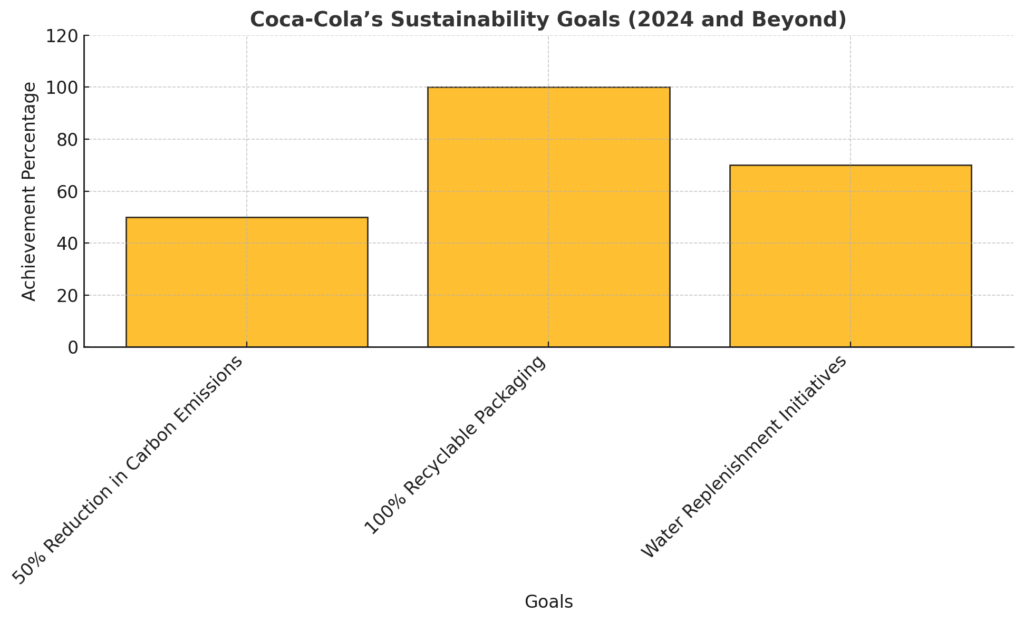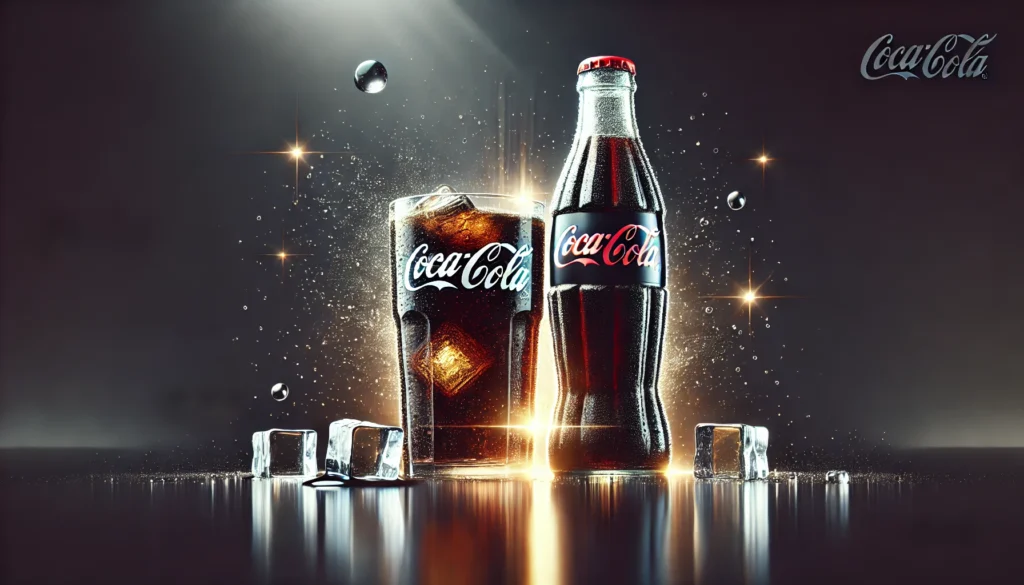Coca-Cola, one of the world’s most iconic brands, continues to captivate audiences globally with its innovative marketing strategies. As we step into 2024, Coca-Cola’s marketing approach showcases a perfect blend of tradition, innovation, and digital transformation. This case study delves into the intricacies of Coca-Cola’s marketing strategy in 2024, offering insights, fun facts, and actionable takeaways for businesses aiming to enhance their brand presence.
The Pillars of Coca-Cola’s Marketing Strategy
Coca-Cola’s marketing strategy revolves around four key pillars:
- Brand Loyalty
- Personalization
- Sustainability Initiatives
- Digital Transformation
Let’s explore each of these in detail.
1. Brand Loyalty: A Legacy Reinforced
Coca-Cola’s legacy is built on an emotional connection with its audience. By consistently delivering on its promise of happiness and refreshment, the brand has maintained unparalleled loyalty. Coca-Cola has managed to stay relevant across generations through campaigns that not only advertise the product but celebrate the values and emotions associated with it.
Key Tactics:
- Emotional Storytelling: Campaigns like “Share a Coke” resonate deeply with consumers by personalizing the brand experience. The focus on happiness and togetherness makes Coca-Cola more than just a beverage; it becomes a part of celebrations and daily life.
- Seasonal Campaigns: Coca-Cola’s association with Christmas, featuring the iconic Santa Claus, continues to evoke nostalgia and joy. The brand also explores seasonal events like summer vacations and sports tournaments, positioning Coca-Cola as a drink for every occasion.
- Music Collaborations: Partnering with musicians to create catchy jingles and soundtracks that become cultural phenomena.
- Community Engagement: Coca-Cola engages with local communities through sponsorships and events, further strengthening its connection with people.
Fun Fact: Did you know? Coca-Cola’s Santa Claus design in the 1930s popularized the modern image of Santa in a red suit! This cultural influence has cemented the brand’s association with Christmas festivities worldwide.
2. Personalization: Engaging the Individual Consumer
Coca-Cola’s personalization efforts have taken a leap in 2024. From custom labels to interactive digital experiences, the brand is focusing on making every consumer feel special. The “Share a Coke” campaign remains a benchmark for personalization, encouraging consumers to find bottles with their names or the names of loved ones.
Advanced Personalization Techniques:
- AI-Driven Campaigns: Using artificial intelligence to analyze consumer behavior and preferences, Coca-Cola tailors its messaging to specific audiences.
- Localized Advertising: Each region gets a unique flavor of Coca-Cola’s ads, making them culturally relevant.
- Interactive Experiences: Augmented reality (AR) features on packaging allow consumers to unlock exclusive content through their smartphones.
- Dynamic Pricing Models: Promotions are tailored based on consumer behavior and purchasing trends in specific markets.

Pro Tip: Brands can learn from Coca-Cola’s success with personalization by leveraging data analytics and AI to understand consumer preferences. Invest in tools that enable you to segment audiences effectively and deliver unique messages.
Table: Coca-Cola Personalization Examples
| Personalization Tactic | Description |
|---|---|
| Custom Labels | Names, slogans, and emojis on bottles |
| Regional Campaigns | Unique ads for different geographies |
| Social Media Interactions | Personalized responses and shoutouts |
| AR Packaging | Scannable bottles for exclusive content |
Fun Fact: In Australia, Coca-Cola’s “Share a Coke” campaign saw a 7% increase in sales in just one year, proving the power of personalization.
3. Sustainability Initiatives: A Commitment to the Planet
Sustainability is at the forefront of Coca-Cola’s 2024 strategy. With consumers increasingly valuing eco-friendly practices, Coca-Cola is taking significant steps to reduce its environmental impact. Sustainability is not just a buzzword for Coca-Cola; it’s a long-term commitment to preserving the planet while staying aligned with consumer values.
Initiatives:
- World Without Waste Program: Aiming to collect and recycle one bottle or can for every one sold by 2030. This initiative has already led to partnerships with recycling organizations worldwide.
- Eco-Friendly Packaging: Increased use of plant-based and 100% recycled materials, reducing dependence on virgin plastics.
- Water Stewardship: Coca-Cola replenishes 100% of the water used in its products, ensuring sustainable water management practices.
- Energy Efficiency: Transitioning to renewable energy sources for manufacturing and distribution operations.
Sustainability Milestones:
- Over 50% of Coca-Cola’s packaging is now recyclable globally.
- Coca-Cola is piloting refillable bottle stations in urban centers.
- Reduced carbon emissions across supply chains by 25% since 2015.
Chart: Coca-Cola’s Sustainability Goals (2024 and Beyond)

Fun Fact: Coca-Cola’s PlantBottle, introduced in 2009, was the first fully recyclable PET plastic beverage bottle made partially from plants. The company has since distributed over 35 billion PlantBottles.
4. Digital Transformation: Leading in the Digital Era
Digital marketing remains a cornerstone of Coca-Cola’s strategy in 2024. From social media campaigns to immersive AR/VR experiences, the brand is leveraging cutting-edge technologies to engage younger audiences. Coca-Cola’s digital transformation focuses on blending technology with creativity to enhance consumer engagement.
Key Strategies:
- Content Marketing: Coca-Cola’s YouTube channel is brimming with engaging content, from short films to behind-the-scenes stories. In 2024, the focus is on creating episodic content that keeps audiences coming back.
- Influencer Collaborations: Partnering with micro and macro influencers to amplify reach. Coca-Cola has also ventured into collaborations with digital content creators on platforms like Twitch and YouTube Gaming.
- Gamification: Interactive games on apps and social media platforms enhance user engagement. For example, Coca-Cola’s virtual treasure hunts encourage users to scan QR codes on bottles to win prizes.
- AR/VR Campaigns: Immersive virtual reality experiences bring consumers closer to Coca-Cola’s production processes and brand story.
Digital Transformation Success:
- Coca-Cola’s AR campaign for the FIFA World Cup allowed fans to create personalized cheers for their teams.
- The brand’s virtual reality experiences provide immersive factory tours.
- Coca-Cola’s chatbot assistants improve customer service and engagement on social media platforms.
Pro Tip: Utilize emerging platforms like TikTok and Instagram Reels for short, engaging video content to connect with Gen Z and millennials. Experiment with AR filters and challenges to drive organic engagement.
Coca-Cola’s Social Media Strategy: A Closer Look
Statistics:
- Coca-Cola’s Instagram page has over 3 million followers with an engagement rate of 4.5%.
- Their TikTok hashtag challenges have garnered over 1 billion views.
- Twitter remains a vital platform for real-time brand interactions.
- Facebook groups and events are actively used for community building.
| Platform | Follower Count | Engagement Rate |
| 3M+ | 4.5% | |
| TikTok | 2.5M+ | 6.0% |
| Twitter (X) | 2M+ | 3.2% |
| 5M+ | 3.8% |
Fun Fact: Coca-Cola’s “#ShareACoke” TikTok challenge in 2023 inspired over 500,000 user-generated videos in just two weeks! This demonstrates the brand’s ability to engage audiences with creative, interactive campaigns.
Lessons for Businesses
Coca-Cola’s marketing strategy offers valuable lessons:
- Build Emotional Connections: Use storytelling to connect with your audience. Create campaigns that evoke emotions and align with your brand’s values.
- Embrace Personalization: Tailor your marketing efforts to individual preferences. Leverage consumer data to make informed decisions.
- Prioritize Sustainability: Align your brand values with those of your audience. Consumers are more likely to support brands that prioritize environmental responsibility.
- Leverage Digital Channels: Stay ahead by adopting the latest digital trends. Consistently engage with your audience on social platforms.
- Experiment with Emerging Technologies: Incorporate AR/VR, gamification, and other innovative methods to enhance user experiences.
- Engage Through Community Initiatives: Build trust and loyalty by giving back to the communities you serve.
Conclusion
Coca-Cola’s marketing strategy in 2024 highlights its ability to adapt and innovate while staying true to its core values. By focusing on personalization, sustainability, and digital transformation, the brand continues to set benchmarks in the marketing world. Coca-Cola’s dedication to building emotional connections and embracing new technologies positions it as a leader in the industry.
Businesses can draw inspiration from Coca-Cola’s approach to create their own success stories. By learning to adapt, innovate, and stay connected with audiences, brands can ensure longevity and relevance in an ever-changing market.
Stay tuned for more updates on Coca-Cola’s evolving marketing strategies and their impact on the global market.



